It was the fourth sinking of its long career, and this time the old wooden fishing boat lay submerged for nearly six months in brackish water and mud. When the authorities finally hauled it to the surface and towed it to Port Townsend, Washington, in June 2013, the Western Flyer looked like a ghost ship. Veils of seaweed hung from its rotting timbers, and it was encrusted with barnacles. The insides were full of mud. At the boatyard the wreck was valued at $0, but a purchaser from California, John Gregg, paid $1 million for it, or more precisely, for its mystique.
In the spring of 1940, the boat was chartered for six weeks by the novelist John Steinbeck, who had published The Grapes of Wrath the previous year, earning national acclaim, sudden wealth and death threats from reactionaries outraged by the novel’s populist message. With his close friend Ed Ricketts, a brilliant, eccentric marine biologist, Steinbeck sailed to the Sea of Cortez to survey marine life along the Baja coast, escape from the modern world and Steinbeck’s new celebrity, and hone the deep, holistic, ecological philosophy that they were developing in tandem.
It was the most renowned literary collaboration between a great American novelist and a great American scientist, and it produced a highly original and influential book. The Log from the Sea of Cortez, Steinbeck’s account of the trip, is a high-spirited blend of adventure travel writing, marine science and freewheeling philosophy, shot through with a marvelous sense of wonder at the interconnectedness of the world. Like Thoreau’s Walden or Aldo Leopold’s Sand County Almanac, it is a foundational text for the modern environmental movement, but looser and funnier than its counterparts. Steinbeck told his third wife, Elaine Anderson, that it was the best book of his career, and it still inspires a cult-like devotion.
/https://tf-cmsv2-smithsonianmag-media.s3.amazonaws.com/filer/21/f6/21f6e402-fd5b-45d5-a46b-619832d66c75/sep2019_f04_steinbeck.jpg)
One of the devotees is John Gregg, a 57-year-old geologist who owns a California-based company specializing in geotechnical engineering, deep-ocean coring and underground testing for contaminants. He’s now spending another $2 million—his own money, grants and publicly raised funds—to make the Western Flyer seaworthy again. He intends to get the boat into the water in 2020, honoring the 80th anniversary of the Steinbeck and Ricketts voyage, and follow their Sea of Cortez route, with artists, writers and scientists aboard. After that, the boat will become an education and research vessel.
The Western Flyer, a 77-foot purse seiner built of old-growth Douglas fir in 1937, has outlasted nearly all its contemporaries, despite its sinkings. The people working with the boat all talk about its extraordinary “life force.” This would not surprise Steinbeck, who wrote in The Log that “a boat, above all other inanimate things, is personified in man’s mind.” He added a line often quoted by the shipwrights, scientists and scholars involved with the Western Flyer today: “Man, building this greatest and most personal of all tools, has in turn received a boat-shaped mind, and the boat, a man-shaped soul.”
* * *
John Gregg is tall, blond, blue-eyed, with a rumpled appearance and an unflappable attitude. Looking out at the Sea of Cortez, also known as the Gulf of California, on a bright breezy morning in Baja, he explained to me how his obsession began.
In 1971, when he was 11, his family was living in Brunswick, Georgia. It was a poor rural community with no library, but every two weeks an eagerly anticipated bookmobile would arrive. “It was a rounded van, and you deposited your books in the front, and went out through the back,” he says. “You were allowed five or six books, and you only had five or six minutes to choose them, so it was a scramble. On one of the covers, I saw a picture of a boat in a big green sea with a yellow sky. It looked like an adventure book, and that’s what I liked, so I grabbed it without thinking.”
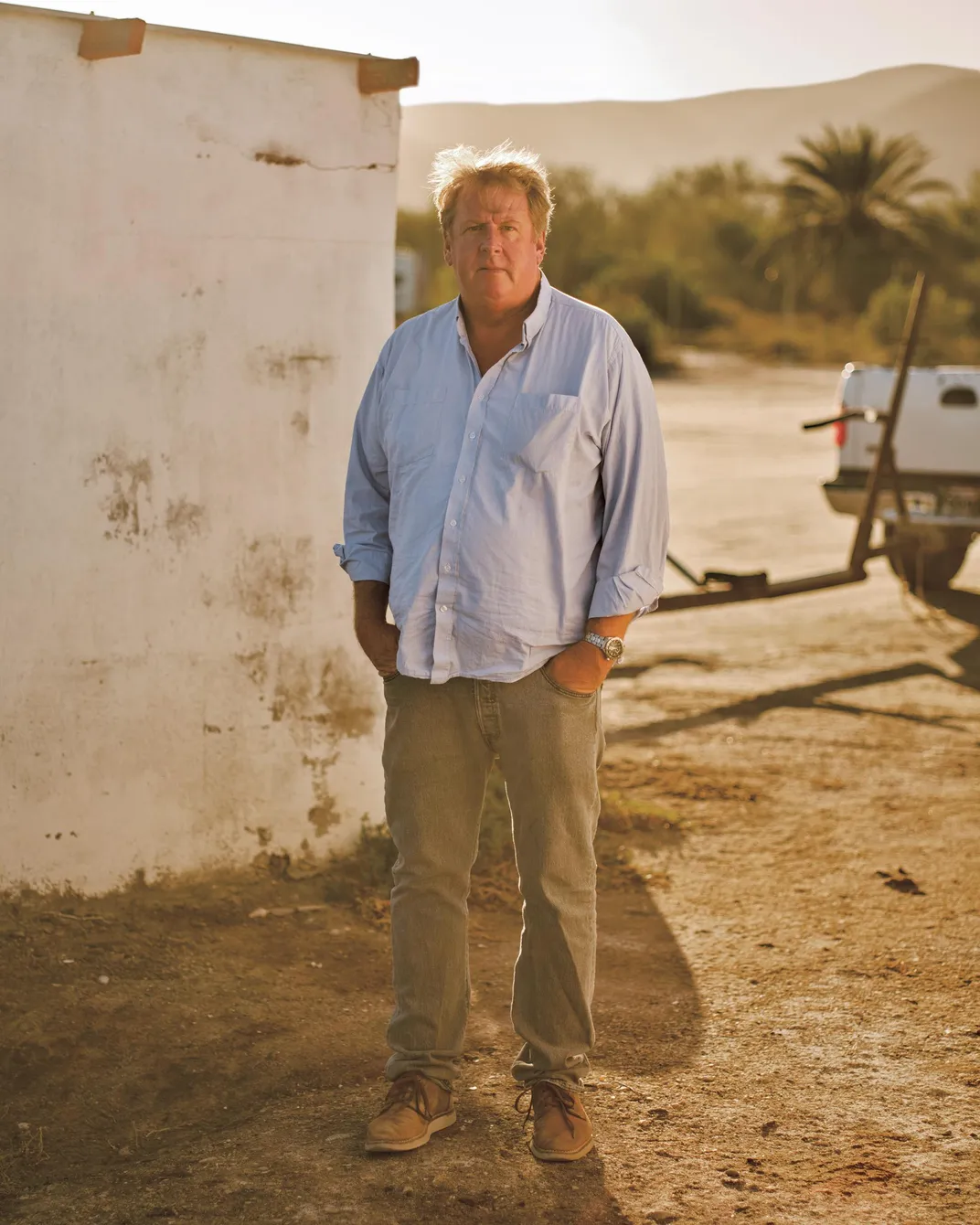
It was a 1951 edition of The Log from the Sea of Cortez. Although he was hoping for pirates, monster storms and aggrieved whales, he became completely absorbed by Steinbeck and Ricketts’ gentler adventures in coastal tide pools and Mexican port towns. “I already knew I wanted to be a scientist, and I understood they were doing serious science,” he says. “But they were also having fun, talking philosophy under the stars, and catching fish. They were young and sunburned and drinking. Every port they went into sounded great. I loved everything about it.”
He started reading other Steinbeck books, and Monterey, California, where Steinbeck and Ricketts lived in the 1930s and early 1940s, became a “mythical place” for him. When Gregg went there for the first time, in 1982, he was astonished to discover that Ed Ricketts’ former laboratory still existed, although it was locked and closed to the public. Sandwiched between two sardine canneries, the lab had also functioned as a raucous party spot, and a salon where Steinbeck, Ricketts and others, including Joseph Campbell, the scholar of human mythology, drank heavily and discussed science, literature, art and philosophy among cages of live rattlesnakes and jars of pickled sea creatures.
“I swore to myself I would get in the lab somehow, just to see it,” says Gregg. “I don’t remember a conscious decision to get the Western Flyer and fix it up. I assumed it would happen, even though I had no proof the boat still existed.”
Gregg spent decades looking for the Flyer. “Nobody in Monterey knew anything,” he says, “but I heard a few things in the Pacific Northwest and Alaska. Whenever I was up there, I would check at the boatyards and fishing docks, and ask about the Flyer. People would say, ‘No, it’s been crushed,’ and, ‘Yes, it’s fishing in Alaska,’ and, ‘No, it sank, but so-and-so has the wheel.’”
Finally, in 2011, Gregg learned that the boat’s name had been changed to Gemini, and it was owned by a real estate developer and Steinbeck fan named Gerry Kehoe. “I called Kehoe,” says Gregg, “and I kept calling him for two years, but I couldn’t get a reply.”
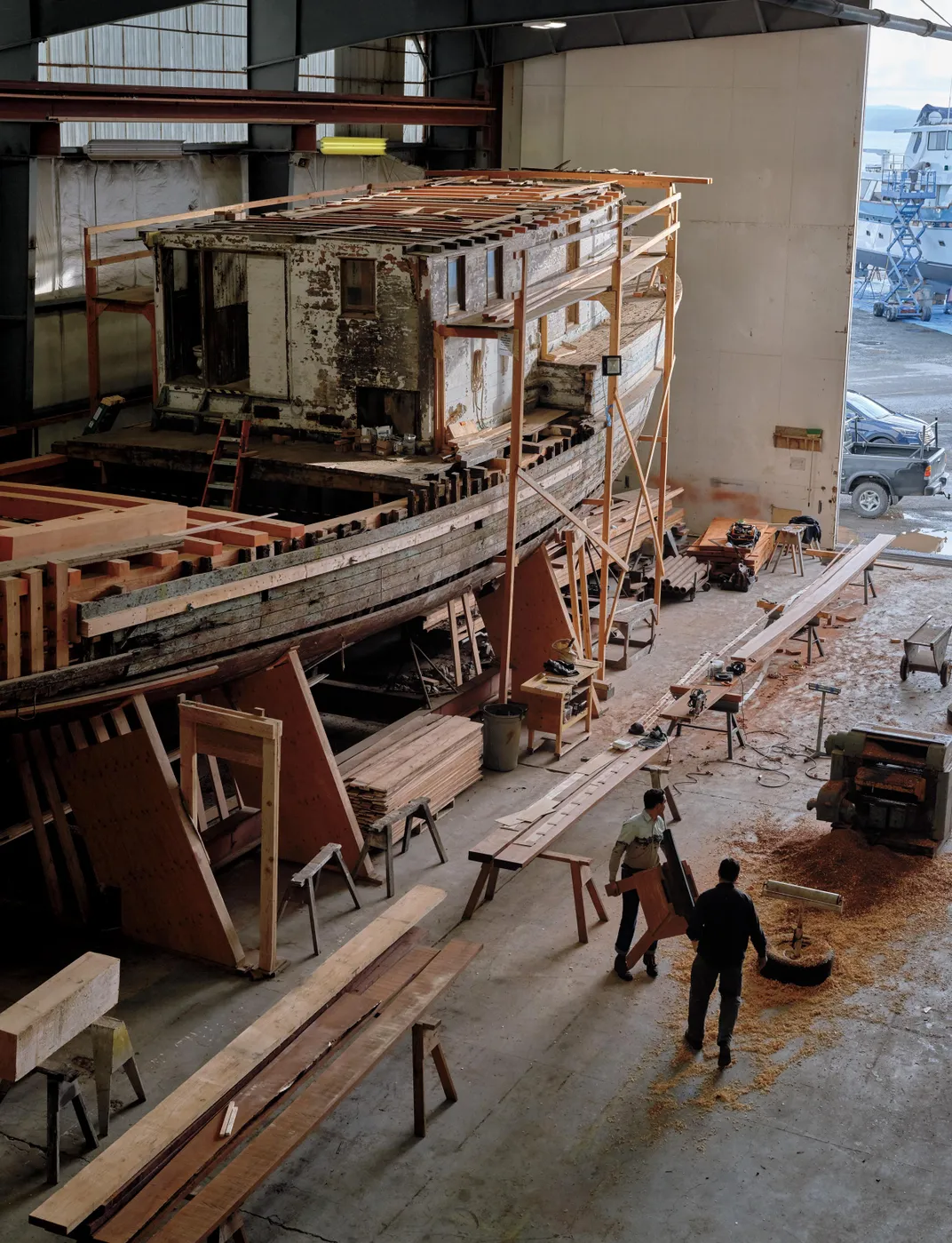
The old retired boat was moored in a slough near Anacortes, Washington, in very poor condition, but Kehoe had big plans. He was going to cut it into pieces and reassemble it in the lobby of a new hotel, or turn it into a floating restaurant on an indoor moat in a former haberdashery, as part of a new tourist complex in Salinas, California, where Steinbeck was born and grew up. Before Kehoe could realize his plans, a plank ruptured in the boat’s hull and it sank. It cost him a reported $100,000 to raise the boat. Four months later, in January 2013, it sank again—and stayed down for nearly six months.
“When they got her raised and into dry dock at Port Townsend, Kehoe started taking my calls,” says Gregg. “He finally agreed to meet me in a restaurant in Salinas. We both had our lawyers there. Kehoe is a gruff, tough, old Irish guy and he was staring at me across the booth. In the first ten seconds, he knew I was going to buy the boat and pay too much for it. I knew it too.”
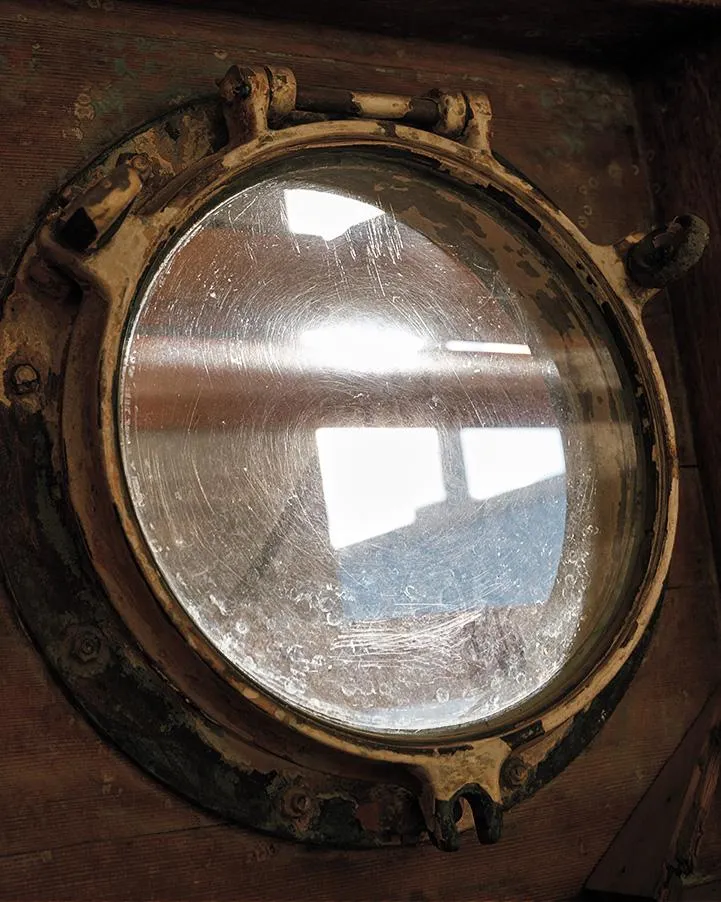
Kehoe said the boat would cost $1.5 million. Gregg offered $200,000. They had another meeting a few months later. “My lawyer was my brother Andy, and he was kicking me under the table when I agreed to pay a million,” says Gregg. “I knew it was way too much, but I wanted to make it happen. I’ve never been a money person. If you spend too much, you can make some more. That’s how I looked at it. Then I had to post a $25,000 bond because the boat was derelict, and the boatyard had valued it at zero. That did give me pause.”
Gregg will admit to love, obsession and “borderline folly” in his relationship with the Western Flyer, but he insists that sentimental nostalgia is not part of it. “I always wanted to use the boat as an ambassador to do something new and interesting and scientifically important,” he says. “And I think that’s what Steinbeck and Ricketts would have wanted. They had no nostalgia for old things.”
* * *
On Cannery Row in Monterey, the street that Steinbeck immortalized in fiction, there stands an unobtrusive wooden building with redwood shingles and a small sign reading “Pacific Biological Laboratories.” Susan Shillinglaw, former director of the National Steinbeck Center in nearby Salinas, has agreed to show me the lab where Ed Ricketts, the model for Doc in Steinbeck’s 1945 novel, Cannery Row, prepared his biological specimens, and held his parties and salons.
The brothel across the street is gone, as is the Chinese grocery where Ricketts usually bought two quarts of beer in the morning, and more throughout the day. The working sardine canneries are gone too, replaced by Cannery Row-themed souvenir shops, restaurants and attractions. “Most tourists come here because of Steinbeck and the book, and they walk right past the lab,” says Shillinglaw, a literary scholar, whose enthusiasm for Steinbeck has never waned over three decades of studying the author. “They don’t know that this is the lab in the book, or how important it was to Steinbeck’s life and work. Ed Ricketts shaped his thinking more than anyone.”

She leads me through the front door into the room where Ricketts preserved his “little beasties,” as he sometimes called them, and entertained guests. Five years older than Steinbeck, with a slim, wiry build, and a gaunt, handsome face, Ricketts had charisma and a saintly tolerance for most human foibles, although he detested teetotalers and was horrified by old age. He was “libidinous as a goat,” in Steinbeck’s phrase, and led many women to his small, uncomfortable bed in the back room. “Ed liked his women as complicated as possible,” says Shillinglaw. “If they were single and available with no psychological problems, he wasn’t interested.” In the essay “About Ed Ricketts,” which is included in The Log from the Sea of Cortez, Steinbeck joked, “If he could have found a woman who was not only married, but a mother, in prison, and one of Siamese twins, he would have been delighted.” Among his eccentricities was a phobia of getting his head wet. He waded happily in tide pools up to his chest, but a single raindrop on his head would throw him into a panic, so he wore waterproof hats.
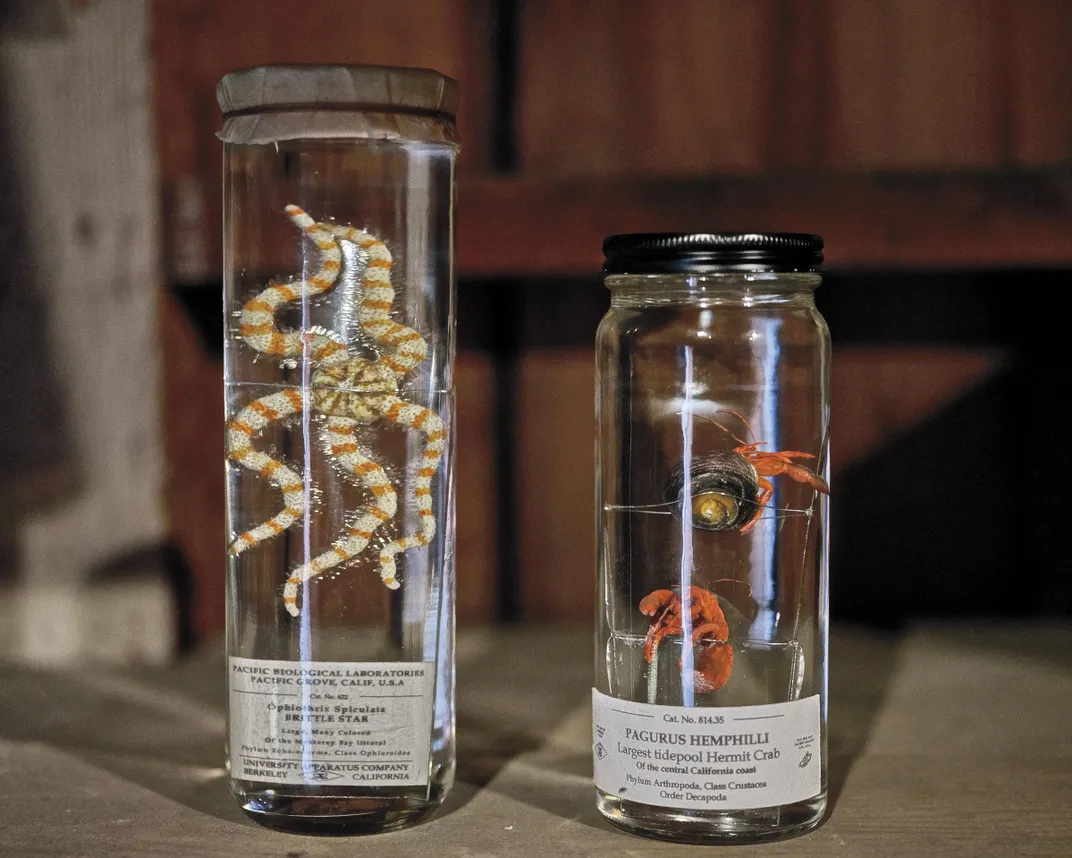
Despite his vast daily intake of beer, Ricketts worked long hours in the lab with great precision, wrote extensively, and devoured scientific monographs and other challenging books. “His mind was kaleidoscopic,” says Shillinglaw. “He was into Jungian psychology, Nietzsche, Chinese poetry, medieval music, classical music. He corresponded with scientists all over the world, and he was friends with all the bums and prostitutes on Cannery Row.” On the walls of this room, Ricketts hung yards and yards of graph paper with colored lines tracing the musical and artistic achievements in China, Western Europe, Greece, Rome and Egypt. The lines illustrated his theory that culture advances in sudden dramatic jumps followed by long plateaus.
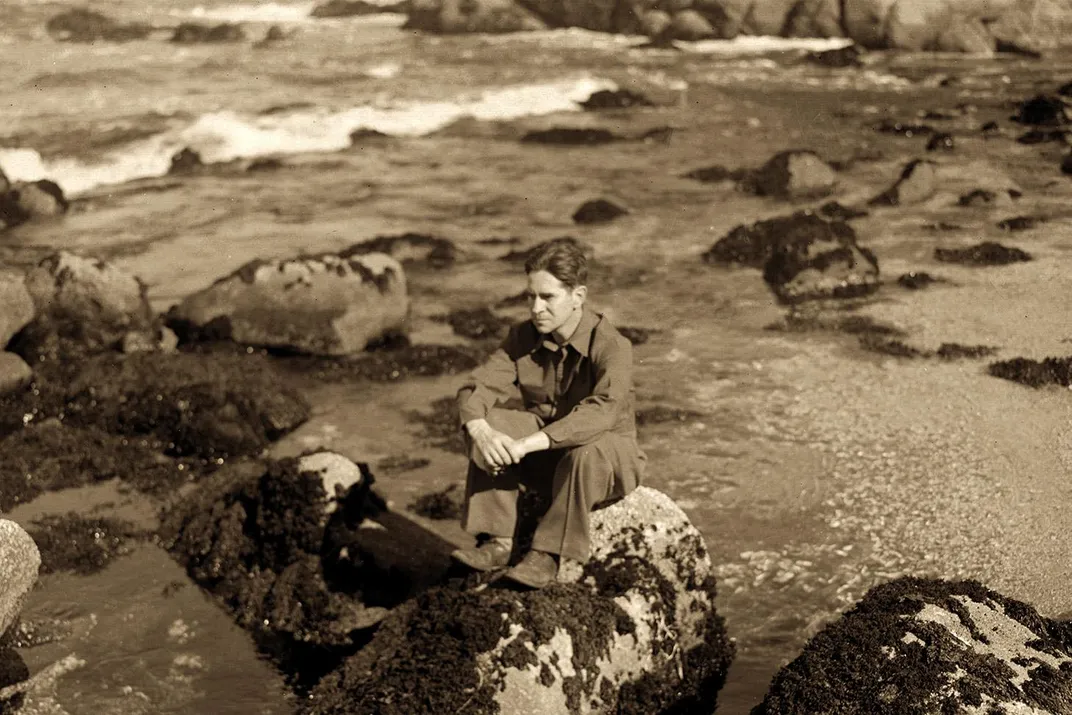
Steinbeck, as a young, struggling, fiercely dedicated writer, met Ricketts in 1930, and they became friends and encouragers of each other’s work. In 1939, the same year Steinbeck published The Grapes of Wrath, Ricketts came out of obscurity with Between Pacific Tides, a seminal work of marine biology still taught today. Instead of grouping creatures taxonomically, he grouped them by habitats and examined them as communities—an early breakthrough in ecological thinking.
* * *
In January and February of 1940, the two men, and Steinbeck’s first wife, Carol, rushed to organize the expedition to Baja California. Originally conceived as a car trip, it had morphed into a 4,000-mile sea journey, with at least 25 stops planned for collecting marine invertebrates. None of the local boat owners would charter them a vessel for such a ridiculous-sounding project, but along came the Western Flyer, sailing into Monterey Bay with captain Tony Berry at the helm. He had done a scientific research trip in Alaska between fishing runs, and found it easy enough, so he agreed to a six-week charter.
They loaded up the Flyer with equipment, books, food, wine and other supplies. After a massive farewell party at the Monterey dock, they fired up the engine and chugged away down the California coast. You wouldn’t know it from reading The Log, but in addition to Ed Ricketts, Tony Berry and the three-man crew, Carol Steinbeck was onboard with her husband. Susan Shillinglaw, who wrote a fascinating book about the Steinbecks’ marriage, has thought hard about why John omitted Carol from The Log.
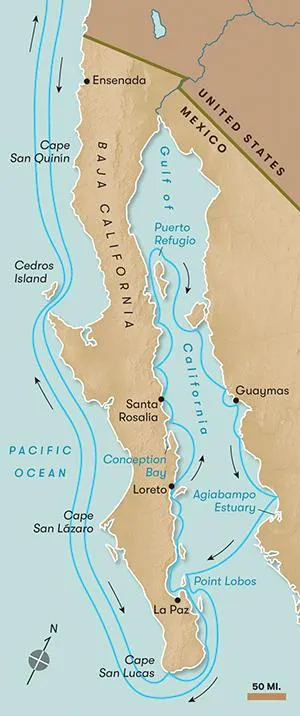
“John was already involved with someone else, the marriage was coming apart, and the trip was supposed to fix it, which it didn’t,” she says. “But I think the real reason he left her out is literary. It’s much easier to make the narrative flow without introducing Carol as a character. He doesn’t introduce Ed as a character either, but he’s implicit in the ‘we’ that John uses to narrate the book.”
With the engine running day and night, they went straight to Cabo San Lucas at the southern tip of the Baja Peninsula. What is now a ritzy A-list resort was then “a sad little town,” with a doleful cantina full of cockroaches and men who couldn’t afford to buy a drink. On the wave-battered coastal rocks, however, they found life teeming with “exuberant fierceness,” and took samples of dozens of species. They preserved them carefully in formaldehyde, and then sailed into the Sea of Cortez.
Biologically speaking, this 700-mile-long sea has some of the richest waters on earth, in drastic contrast to the hard, stony, cactus-studded desert on the surrounding shores. Even today, Baja California is dominated by a feeling of remoteness; in 1940 it seemed like the end of the earth. Tony Berry, an orderly man who loved solid facts, was unsettled by the persistent mirages in the deceptive air, and Steinbeck found it all deeply mysterious, “The sky sucks up the land and disgorges it. A dream hangs over the whole region, a brooding kind of hallucination.”
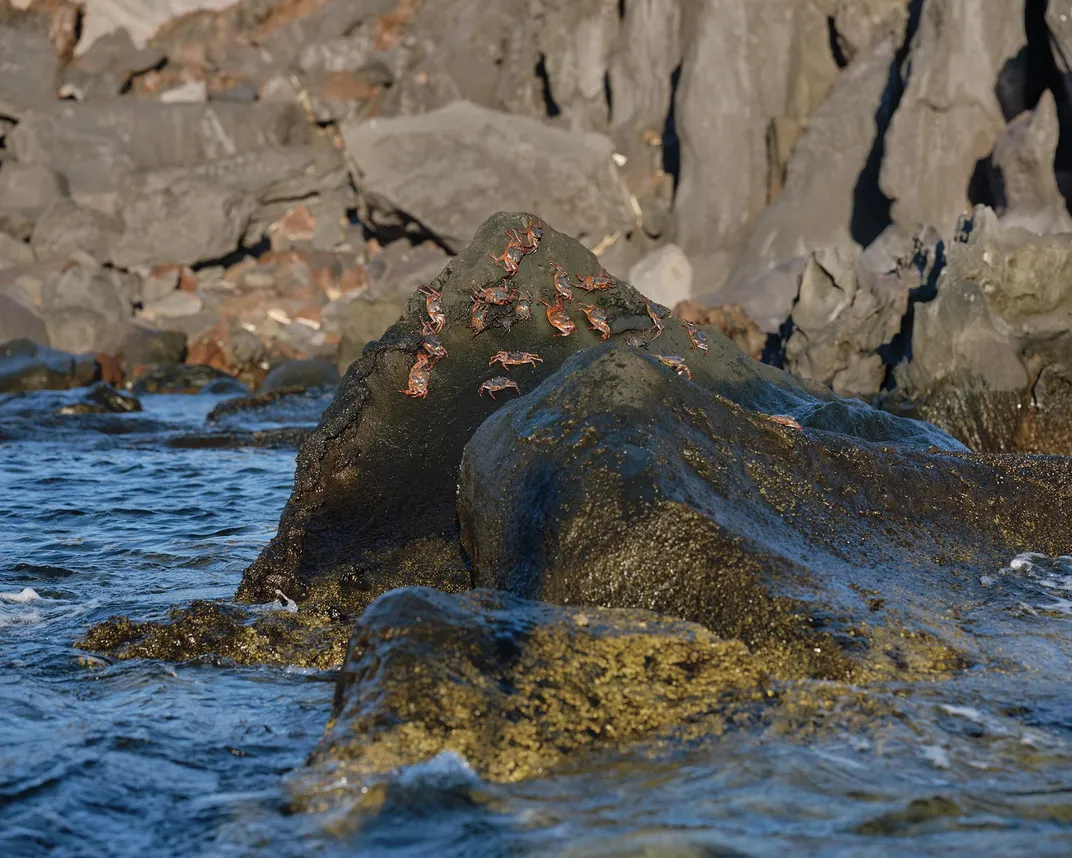
As they moved from one low-tide collecting station to the next, they were studying the distribution of marine invertebrates, but their curiosity was “wide and horizonless,” Steinbeck wrote, and they thought it was a mistake to look at anything, from a sea cucumber to a Mexican folk saint, without recognizing that it lay within a vast, outspreading, almost infinite web of connections.
In port towns, they roistered in cantinas and brothels, marveled at cathedrals. It was hard work collecting specimens in the tide pools, chasing down specimens and prying others off rocks, getting bitten and stung. Evenings were given over to fresh fish and pasta and copious amounts of wine and beer. Carol, who had a lively, inquiring mind and a penchant for witty conversation, would have probably joined in the philosophical discussions that John and Ed so enjoyed.
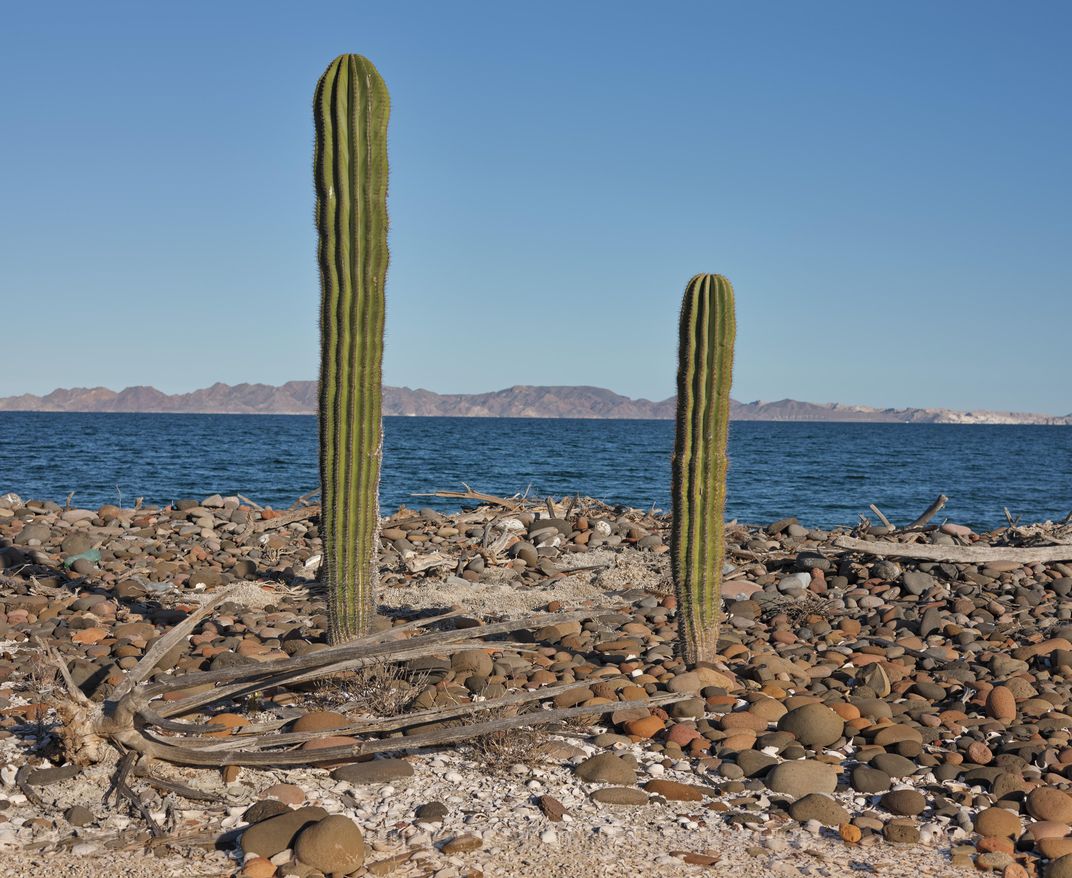
Extrapolating from an encounter with an industrial Japanese shrimp fleet dredging every living thing from the bottom of the sea, Ricketts and Steinbeck foresaw a global environmental catastrophe that threatened the “eventual welfare of the whole human species,” Steinbeck wrote. That prophecy sounds all too plausible today, but very few people were making it in 1940.
Summing up the worldview that emerged from the journey, Steinbeck wrote, “All things are one thing and that one thing is all things—plankton, a shimmering phosphorescence on the sea and the spinning planets and an expanding universe, all bound together by the elastic string of time. It is advisable to look from the tide pool to the stars and then back to the tide pool again.”
He ends the book with a description of the Western Flyer ’s big guy-wire, from bow to mast, vibrating in the wind like the low note of a pipe organ, as the boat hunched through big waves on the way home to Monterey. John and Carol’s marriage ended soon after their return, and John set about writing his account of the trip. It was first published in a 600-page book, Sea of Cortez, co-authored with Ricketts, and including a 300-page scientific catalog of the marine species they encountered. It sold only 2,000 copies. Ten years later, John extracted his travel narrative, added the essay “About Ed Ricketts,” and published it as The Log from the Sea of Cortez. It had mixed reviews, and modest sales at publication, but its reputation grew over time.
The Western Flyer went on to become an apex predator in the Pacific and Alaska. It helped devastate the great Pacific sardine fishery, which spelled the end of Cannery Row. Then it started trawling for ocean perch, “as if clear-cutting an ancient forest,” in the words of Kevin Bailey, a fisheries scientist who wrote a book about the Flyer’s career. When the perch were almost gone, in 1969, it joined in the rampant overfishing of red king crabs and salmon in Alaska. In June 1971, loaded with 120,000 pounds of salmon, it half-sank after hitting a reef and was declared a “total loss” by the Coast Guard. That was the end of its career in the open ocean, although it continued fishing in Puget Sound. By one estimate, a billion fish died on its decks.
* * *
Now the Flyer rests in a huge wooden cradle at the boatyard in Port Townsend, a mere specter of a ship in the process of resurrection. Chris Chase, a chatty, good-humored shipwright in his mid-50s, is the man in charge. “This is highly unusual,” he says. “In the boat business, we don’t do restorations. We do repairs. If a boat can’t be repaired, we scrap it and build a new one.”
The wooden boat was far beyond repair. It was a warped, decaying, disintegrating ruin, with sections of rot from stem to stern. “But she still had this life force,” he says. “When they were towing her, they couldn’t believe how fast she was moving through the water, like she was happy to be out of the mud and floating again.”
He leads me up a ramp onto the deck, pointing out her elegant, curving lines. “These boats were built to be pickup trucks of the sea, with an engine and a hold, but they still wanted them to be beautiful, and have that man-shaped soul,” he says. “We’re trying to preserve the soul of the boat, as much as possible, but she has to take big seas again, and that requires a massive rebuild.” Roughly 30 percent of the boat will stay original, including the galley, the bathroom, or head, and the berths where Steinbeck and the others slept. The remaining 70 percent of the boat is being replaced, and it has proved surprisingly difficult to find suitable wood.
The old-growth forests of Douglas fir, which blanketed most of the Pacific Northwest, and supplied the original beams, have nearly all been cut down, and the millions of new-growth Douglas fir trees are too young. “There aren’t ten trees between here and Portland that I’d put in a boat,” says Chase, referring to Portland, Oregon, 200 forested miles away. Instead, he has sourced Douglas fir and yellow cedar from Canada, white oak from Kentucky, and sustainably produced mahogany from Congo.
Vital to John Gregg’s vision for the boat is a hybrid drive system with a rechargeable electric motor, a remotely operated underwater vehicle (ROV) housed on deck, and a laboratory in the old fish hold. These innovations will alter the balance and physics of the boat, and they’ve been criticized by purists, who want the Flyer to resemble its original self as closely as possible.
“This boat has an incredible magnetism,” says Chase. “At least a thousand people have come here to see her, and some of them are true pilgrims. ‘The book changed my life,’ they say, and the boat is the living embodiment of that story. There was a guy from Sitka [Alaska] in his 80s who was shaking with emotion. ‘I can’t believe I’m walking on the deck of the Western Flyer,’ he said. People have done séances here, and pinned photographs of Steinbeck to the boat, but I’d say nine out of ten people come here because of Ricketts, not Steinbeck.”
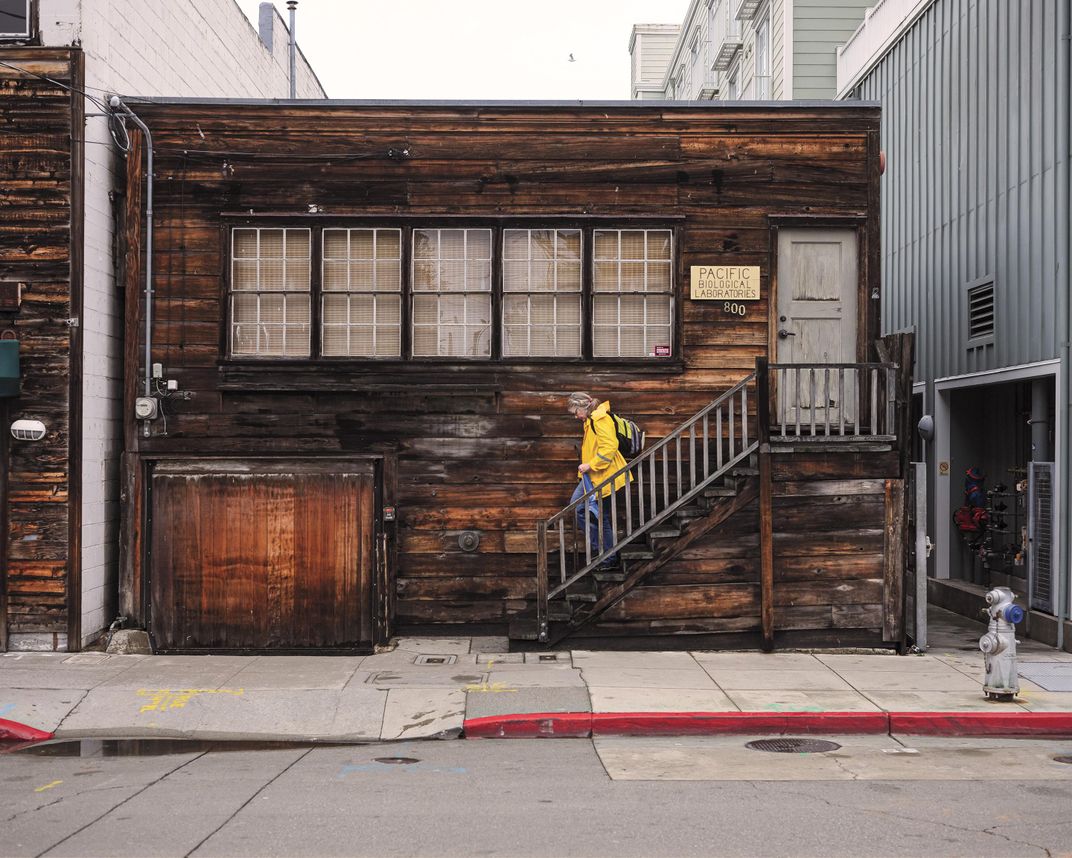
Seven decades after his death at age 50 in 1948—the evening train from San Francisco smashed into his car on the railroad tracks in Monterey—Ed Ricketts remains a beloved figure, especially among marine biologists and people in Monterey. His fans call themselves Ed Heads, and regard their hero as a free-spirited countercultural icon and ecological pioneer. Their vision of Ricketts is almost entirely drawn from Steinbeck’s writings about him. “Every scientist needs a novelist to immortalize him,” says Chase.
But Steinbeck’s immortality as a novelist also owes a great deal to Ed Ricketts. He was the model for not only Doc in Cannery Row, but several other fictional characters, including Jim Casy, the preacher-turned-union organizer in The Grapes of Wrath. Ricketts’ philosophical ideas were also important. Steinbeck always credited Ricketts as the co-author of the Log from the Sea of Cortez, and relied entirely on his notes from the expedition, having taken none of his own. When Ricketts died, Steinbeck was living in New York. Devastated by the loss, he burned all the letters that Ricketts had sent him. Years afterward, Steinbeck said, “He aches me like a missing arm.”
* * *
John Gregg is in Baja California on a scouting mission. He wants to establish a scientific laboratory and southern terminus for the Western Flyer near the old French mining town of Santa Rosalía. “She’ll spend 26 weeks a year based in Monterey,” he says. “The city is putting in solar panels on the dock so the electric motor can charge its Tesla batteries. For the rest of the year, she’ll go north to Sitka and south to here. There’s a 70-mile stretch of water north of Santa Rosalía that’s never had a proper biological transect. That’s real science the Flyer can do.”
Doing real science is how Gregg hopes to inspire the students on the boat. “We’ll invite the older kids from under-resourced community colleges,” he said. “They don’t get to do any real research, they don’t have access to boats, and I like working with them. Out of a hundred, you might inspire six to do ocean science, and that would be great.”
Accompanying Gregg on this trip is the Stanford marine biologist William Gilly. A shambling bear of a man, he probably knows more about squid than anyone else alive, and has worked extensively in the Sea of Cortez. He has arranged for a Mexican fishing boat, or panga, to take us out into that 70-mile stretch of water.
We climb aboard in the gray light before dawn, and thump and bounce our way north as the sun comes up. Dolphins arc through the water. Squadrons of pelicans glide past. We pass the occasional tattered shack on the volcanic shores, and it’s easy to imagine the same salty air brushing across the sun-weathered faces of Steinbeck and Ricketts eight decades ago. Pausing to look at a school of brightly colored triggerfish, then hundreds of angelfish, Gilly says, “This is still a rich area, but there are no more big squid, so no more sperm whales. We think it’s because the water is warming at depth.”
The world’s oceans are in declining health because of warming temperatures, increasing acidification, overfishing, plastic accumulation and industrial and agricultural pollution. Gregg is concerned that these processes are looked at haphazardly. “We don’t have a good overall picture, just indications from a hodgepodge of studies,” he says. “We need to develop a systematic approach for measuring acidification along the Pacific coast, for example, then the Flyer can help with long-term monitoring.”
Chugging up an estuary, with ibis stalking the shallows and kingfishers on the banks, Gilly wonders if it’s the same one that Steinbeck mentions in The Log. We get out of the boat and Gregg points out the tracks of a bobcat and her kitten in the sand. It’s an exceptionally peaceful place and it makes us talk in soft quiet voices. “The essence of the Western Flyer project is the essence of the book,” says Gregg. “It’s the merging of art and science. I always resented the fact that I was pushed over into the science camp, when I was just as interested in art and literature.”
The resurrected Western Flyer will be a scientific vessel, but Gregg wants to have writers and artists involved as well, to ensure that a sense of wonder and beauty is retained. “For so long, it was a faraway dream,” he says. “Now it’s really happening and it’s a complete honor. This sounds trite, but with the Flyer, you’re just a caretaker, not an owner. She’ll be going long after I’m gone.”
:focal(2139x1359:2140x1360)/https://tf-cmsv2-smithsonianmag-media.s3.amazonaws.com/filer/14/2f/142f671e-78fd-492a-a3e7-0c6c7a1378f7/sep2019_f09_steinbeck.jpg)